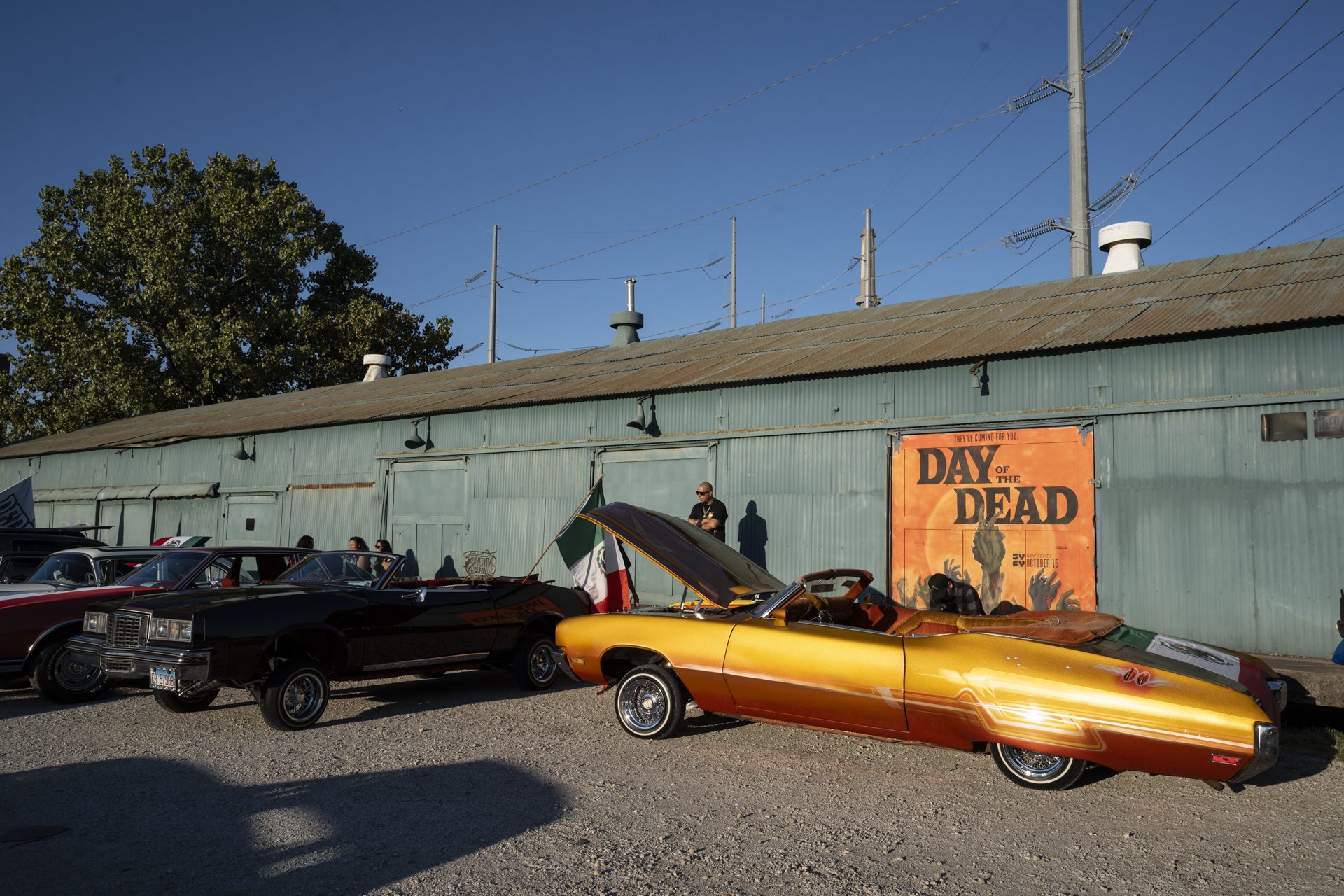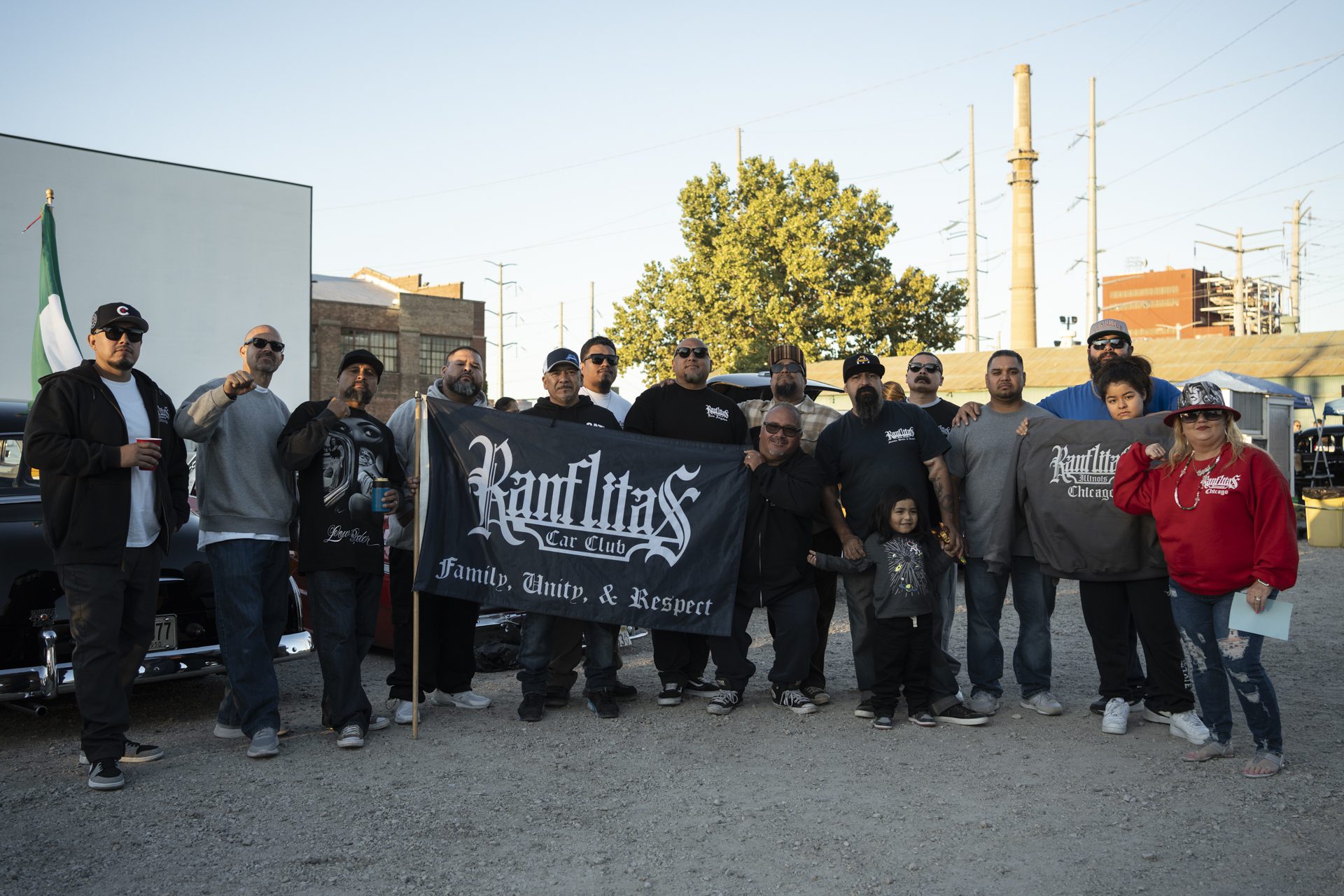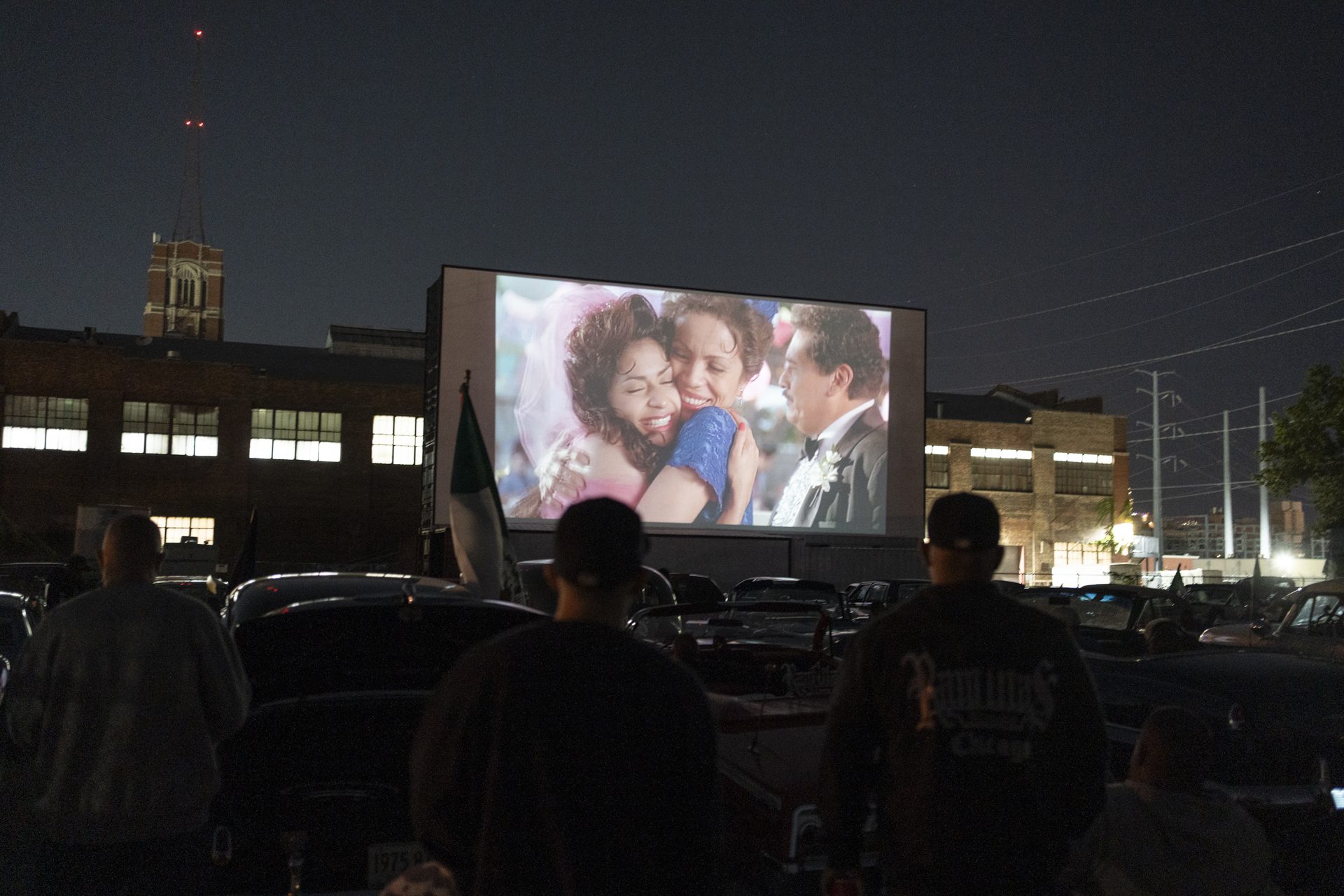 Max Herman/Borderless Magazine
Max Herman/Borderless MagazinePedro Cisneros no esperaba fundar un club lowrider cuando dejó Texas. Eso cambió cuando Chicago se convirtió en su hogar.
En el borde industrial de Pilsen, unas 300 personas de varios clubes automovilísticos se acercan en sus lowriders al autocine, ChiTown Movies. La vibrante pintura de los clásicos Chevys, Cadillacs y Lincolns ilumina la polvorienta calle sin salida junto al río Chicago.
Algunos conductores activan el sistema hidráulico de sus lowriders, haciendo que los coches clásicos reboten hacia arriba y hacia abajo mientras hacen su entrada. Mientras tanto, amigos, familiares y miembros del Amistad Car Club reparten bolsas de regalos y reciben a los invitados a uno de los últimos grandes encuentros lowrider de Chicago de la temporada: "Ranflas At the Drive-In".
El evento culmina con la proyección de "My Family, Mi Familia", el drama multigeneracional dirigido por Gregory Nava sobre una familia que emigró de México a EE.UU. "Ranflas At the Drive-In" es una idea que Pedro Cisneros y el Club de Automovilismo Amistad llevan tiempo pensando. Durante el evento inaugural del año pasado, el club proyectó el drama de 1979 "Boulevard Nights", que presenta de forma prominente la escena lowrider en el este de Los Ángeles.
Noticias que ponen el poder en el punto de mira y a las comunidades en el centro.
Suscríbase a nuestro boletín gratuito y reciba actualizaciones dos veces por semana.
Cisneros, fundador de la sección de Chicago del Amistad Car Club, siempre tiene en cuenta a la comunidad lowrider en general a la hora de planificar eventos con su club.
Cuando Cisneros llegó a Chicago procedente del sureste de Texas en los años 90, no observó muchos lowriders en la zona. Pero eso ha cambiado con los años. Su club ha crecido hasta contar con miembros de California, Texas, México y Chicago.
En el garaje de su casa, Cisneros ayudó a crear un club y dio salida a quienes querían convertir sus coches clásicos en lowriders. Más de dos décadas después, Cisneros sigue apoyando a los interesados en la cultura lowrider, y recientemente ha enseñado a los jóvenes de Little Village a construir triciclos lowrider como parte de un programa de verano.
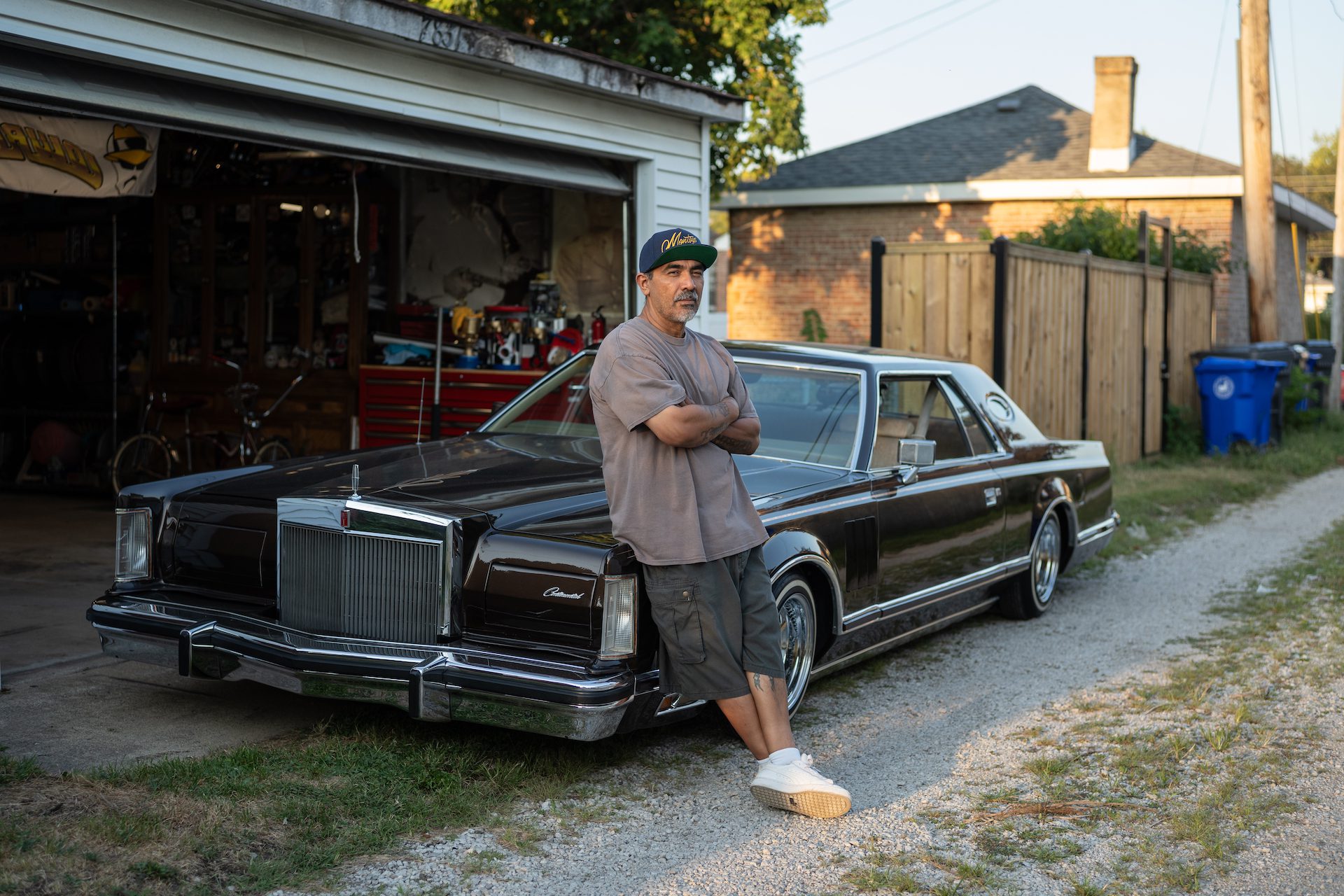
Para Cisneros, ayudó a fomentar una comunidad que se cuida mutuamente.
"Cualquiera al que acudas en la comunidad lowrider está dispuesto a echar una mano", dijo Cisneros. [Si] "vas a un picnic, participas, aunque no tengas coche o no formes parte de la comunidad lowrider. [Si] sólo vas a ver la escena, verás que allí todo el mundo es bienvenido".
Borderless Magazine habló con Cisneros sobre su historia en la cultura lowrider, la llegada del Amistad Car Club a Chicago y su contribución a la comunidad lowrider.
Empezó cuando tenía unos nueve o diez años. Acabábamos de mudarnos al lado de una familia que tenía motos y lowriders. Ver un lowrider por primera vez me dejó alucinado. Para mí, era algo fuera de este mundo. Cuando pulsaron el interruptor hidráulico y el coche bajó hasta el suelo, me quedé alucinado. Desde entonces me enganché.
Empecé a salir con mis vecinos y me sumergí en la cultura lowrider. Tenían una bicicleta Schwinn lowrider. Estaba personalizada con una pintura de escamas metálicas.
Nuestra familia no era acomodada, así que no estaba en una situación en la que pudiera pedir dinero para construir una bicicleta. Así que empecé con lo que tenía, que era una bicicleta normal y corriente. La construí con la ayuda de mis vecinos. Utilicé piezas de desguace de bicis viejas que estaban tiradas en los callejones y las usé para construir mi primera bici lowrider. Me ayudaron con ajustes como bajar la moto para que pareciera una lowrider. Así fue como empezamos a construir motos con lo que teníamos.
Amistad Car Club se fundó en 1978 en Bishop, Texas. Comenzó como un club de ciclismo lowrider y evolucionó hasta convertirse en un club de coches. Los miembros empezaron a construir lowriders en los años 80. Yo me hice socio por la misma época en mi ciudad natal.
Cuando decidí trasladarme a Chicago, recibí la bendición del club para crear una sección en la ciudad. Pero mis intenciones nunca fueron fundar un club automovilístico en otra ciudad. Solo pensaba seguir siendo socio y representar al Amistad Car Club en Chicago, aunque solo fuera yo mismo.
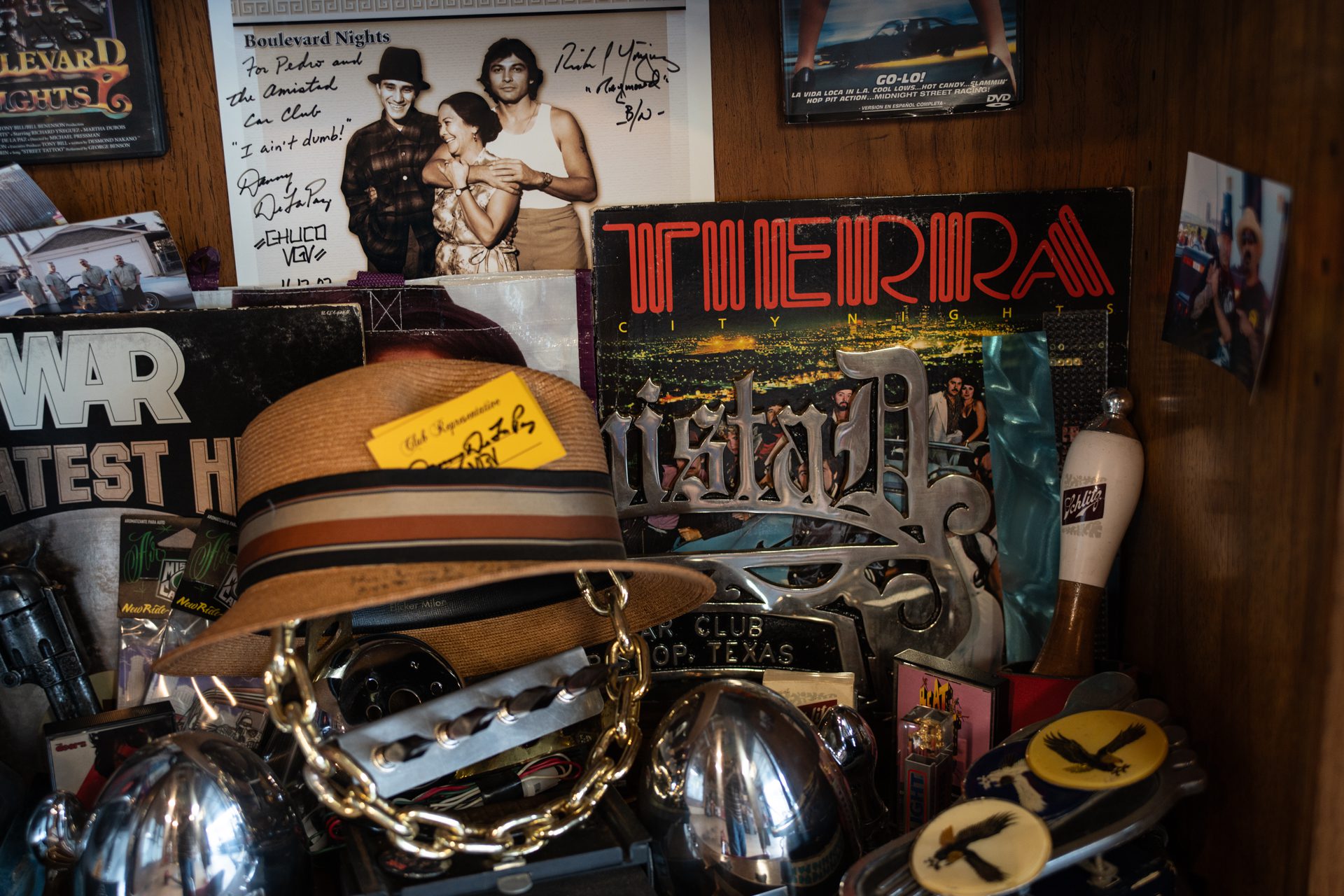
Cuando me mudé definitivamente a Chicago en el 99, llevé mi Lowrider en un remolque de plataforma y lo aparqué delante de la casa de mi madre en Cicero. Recuerdo que alguien se acercó y me dijo: "Oye, tío, me encanta tu Lowrider. Yo también tengo un lowrider'.
Nos presentamos y resultó que vivía en el bloque de al lado y formaba parte de un club automovilístico. Empecé a salir e ir a exposiciones de coches, picnics y reuniones de coches con su club. Le acompañé y representé a Amistad en su club.
Me presentaron a otros clubes de coches y a gente de la comunidad, y a partir de ahí fue creciendo.
En 2001, decidí que un club de coches Amistad en Chicago tenía sentido cuando empecé a conocer gente. Los nuevos amigos que hice en Chicago no formaban parte de ningún club y querían construir un lowrider. Querían formar parte de algo. Estos amigos fueron los primeros miembros de la sección de Chicago. Como club, pusimos sistemas hidráulicos en sus coches. Ya tenían los coches clásicos, así que solo necesitaban zumo. Empezamos el club con un nuevo grupo de miembros.
En los últimos años, la escena lowrider ha crecido. En un tiempo, el crecimiento fue lento. Por aquel entonces, a principios de la década de 2000, solo nos dedicábamos a pasear. No había demasiados eventos lowrider. Había un poco de sequía. Ahora hay cosas todos los días de la semana. Creo que la pandemia tuvo algo que ver con la desaceleración y el crecimiento posterior. Estuvimos encerrados un par de años y la gente solo quería enseñar sus coches, pasear y pasar el rato.
Más información
Creo que las redes sociales han desempeñado un papel importante en la explosión de los eventos. Antes de Instagram y Facebook, difundíamos la información de los eventos a través de folletos y postales. Esperábamos con impaciencia esos días.
Ahora, con las redes sociales, la información circula con bastante rapidez. Todo el mundo quiere sacar sus coches. La gente pasa tiempo en sus coches, quieren mostrarlos. Cualquier oportunidad que tienen para hacerlo, la aprovechan.
Eventos como Ranflas at the Drive-In nos traen recuerdos de nuestra infancia, especialmente a los que íbamos al autocine cuando éramos niños. Es una sensación increíble poder entrar, ver la gran pantalla y estar en tu coche. Es un ambiente estupendo.
Cuando el club se enteró de que había un autocine en Chicago, decidimos que sería genial proyectar una película clásica en el autocine lleno de lowriders.
La imagen de un grupo de lowriders en un autocine viendo una película de lowriders nos pareció una idea genial. No sabíamos si podríamos llevarla a cabo. Los dueños del autocine nos invitaron a alquilarlo por un día y hacer lo nuestro.
Fue un gran éxito cuando proyectamos "Boulevard Nights" el año pasado. Es algo muy importante para la comunidad lowrider. Queríamos compartir la película con todo el mundo en la gran pantalla.
En cuanto a Amistad Car Club, vamos a seguir haciendo lo que podamos para mantener activa la comunidad lowrider. Ya sea un espectáculo de coches, picnic, noche de crucero o la película drive-in, vamos a hacer nuestra parte para mantener las ruedas rodando por la comunidad lowrider Chicagoland.
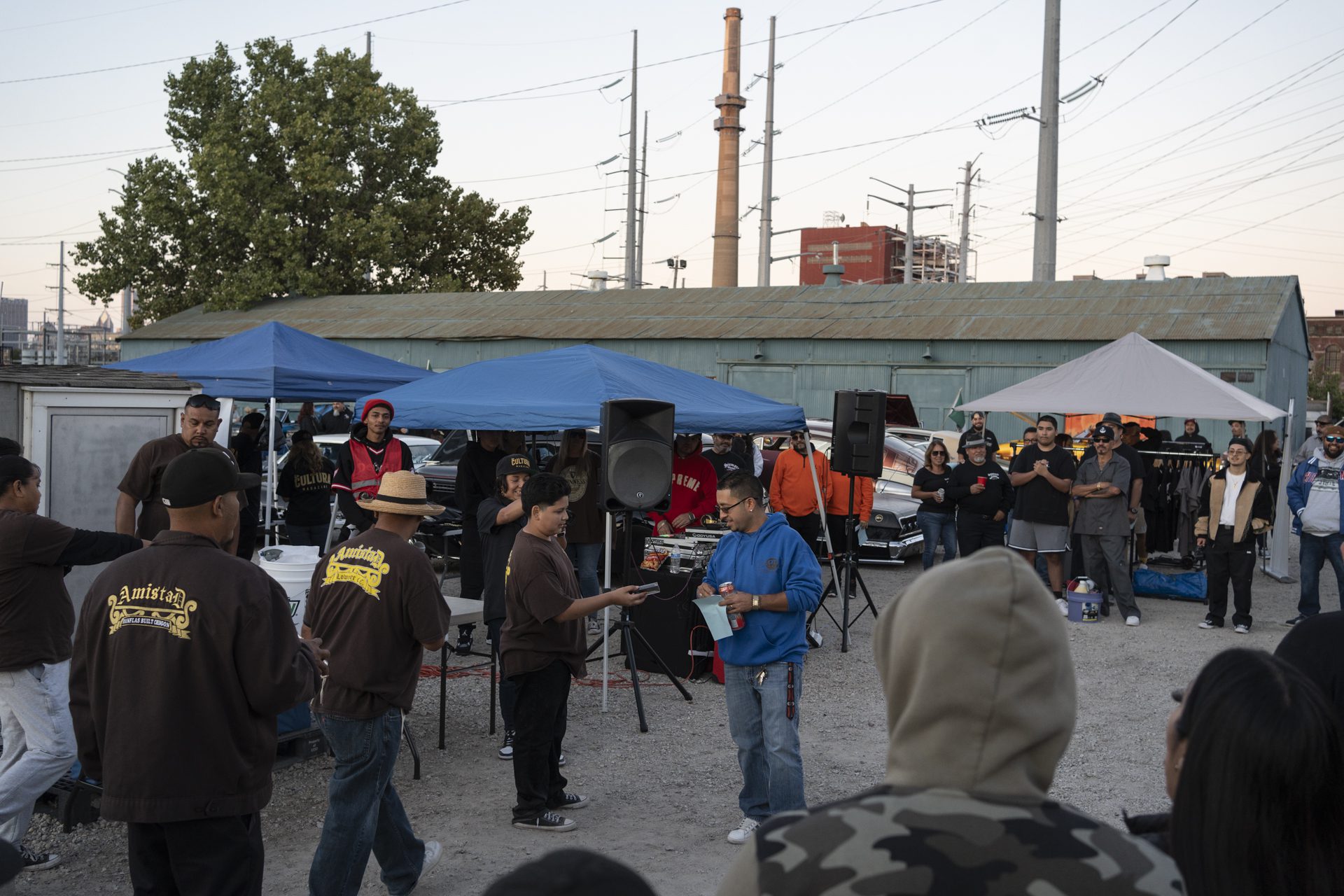
Max Herman es el editor visual de Borderless Magazine. Envíale un correo electrónico a [email protected].


